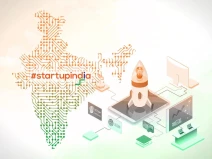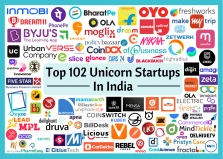
 Dec 18, 2024
Dec 18, 2024
 Excelence Educational Academy
Excelence Educational Academy
The gaps between Educational Institutions and Industry
The gaps between educational institutions and industry in India are a significant challenge, impacting employability and the country's overall economic growth. These gaps arise due to various systemic, curricular, and attitudinal factors. Here's a detailed breakdown:
1. Curriculum and Skill Mismatch
Outdated Syllabus: Many institutions follow outdated curricula that do not align with the current industry needs.
Lack of Practical Skills: Emphasis is often on theoretical knowledge rather than hands-on, practical skills.
Emerging Technologies: Insufficient focus on modern technologies like AI, blockchain, IoT, and data analytics.
2. Limited Industry Collaboration
Few Industry Partnerships: Educational institutions often lack collaboration with industries for curriculum design, internships, or research projects.
Insufficient Exposure: Students do not gain enough exposure to real-world business problems and workflows.
3. Employability Challenges
Soft Skills Gap: Communication, teamwork, and problem-solving skills are often underdeveloped in graduates.
Job-Readiness: Many graduates are not prepared for entry-level roles without additional training by employers.
4. Inadequate Faculty Development
Lack of Industry Experience: Many faculty members lack exposure to current industry practices.
Training Deficiency: Teachers are not regularly trained to keep up with technological and industrial advancements.
5. Ineffective Internship and Placement Programs
Low Internship Quality: Internships are often poorly designed and fail to provide meaningful industry experience.
Placement Focus: Institutions often focus more on securing placements rather than ensuring job satisfaction and alignment with students’ skills.
6. R&D and Innovation Gap
Low Industry Funding: Industries in India invest minimally in research collaborations with academic institutions.
Lack of Incentives: Academic R&D is not adequately incentivized or supported to solve real-world problems.
7. Policy and Infrastructure Deficiencies
Regulatory Bottlenecks: Rigid education policies hinder the introduction of flexible, industry-oriented courses.
Limited Resources: Many institutions lack access to state-of-the-art laboratories and tools.
8. Cultural Attitudes
Focus on Degrees Over Skills: Many students and institutions prioritize obtaining degrees rather than developing relevant skills.
Stigma Around Vocational Training: Vocational and skill-based courses are often undervalued.
Possible Solutions
Industry-Institution Collaborations:
Joint curriculum development and faculty exchange programs.
Skill-Based Education:
Introduce competency-based learning and focus on employability skills.
Internships and Apprenticeships:
Encourage meaningful internship programs with industry participation.
Upskilling Faculty:
Regular training for faculty on emerging technologies and industry practices.
Policy Reforms:
More flexible policies to allow innovative course design and rapid implementation.
Bridging these gaps requires coordinated efforts from educational institutions, industries, and policymakers to ensure graduates are equipped with the skills and knowledge needed for India’s dynamic job market.
Share This Post
Top Categories
Popular Tag
Recently Post

ਭਾਰਤ ਵਿੱਚ ਸਟਾਰਟਅੱਪ ਦੁਆਰਾ ਦਰਪੇਸ਼ ਪ੍ਰਮੁੱਖ ਸਮੱਸਿਆਵਾਂ ਅਤੇ ਉਹਨਾਂ ਦੇ ਹੱ...
Dec 29, 2024
భారతదేశంలో స్టార్టప్లు ఎదుర్కొంటున్న ప్రధాన సమస్యలు మరియు వాటి ప...
Dec 29, 2024
ഇന്ത്യയിലെ സ്റ്റാർട്ടപ്പുകൾ നേരിടുന്ന പ്രധാന പ്രശ്നങ്ങളും അവയുടെ...
Dec 29, 2024
இந்தியாவில் ஸ்டார்ட்அப்கள் எதிர்கொள்ளும் முக்கிய பிரச்சனைகள் மற்ற...
Dec 29, 2024
ಭಾರತದಲ್ಲಿ ಸ್ಟಾರ್ಟ್ಅಪ್ಗಳು ಎದುರಿಸುತ್ತಿರುವ ಪ್ರಮುಖ ಸಮಸ್ಯೆಗಳು ಮತ್ತು...
Dec 29, 2024
ଭାରତରେ ଷ୍ଟାର୍ଟଅପ୍ ଏବଂ ସେମାନଙ୍କର ସମାଧାନର ମୁଖ୍ୟ ସମସ୍ୟା |
Dec 29, 2024
भारत में स्टार्टअप्स के सामने आने वाली प्रमुख समस्याएं और उनके सम...
Dec 29, 2024
ভারতে স্টার্টআপদের প্রধান সমস্যা এবং তাদের সমাধান
Dec 29, 2024
Major Problems Faced by Startups in India and Their Solutions
Dec 29, 2024
ہندوستان میں اسٹارٹ اپس کو درپیش اہم مسائل اور ان کے حل
Dec 29, 2024Related Post
 Dec 24, 2024
Dec 24, 2024
 Indoglobe Institutions
Indoglobe Institutions
Nursing plays a critical role in the medical industry, providing direct patient care, supporting healthcare teams, and...
Read More
 Dec 22, 2024
Dec 22, 2024
 Oxford India Institute
Oxford India Institute
Skill development programs initiated by the government can have a significant positive impact on employment in India. H...
Read More
 Dec 21, 2024
Dec 21, 2024
 NSCSM
NSCSM
Boosting villages to develop like cities with job opportunities and training in India requires a multi-faceted approac...
Read More
 Dec 20, 2024
Dec 20, 2024
 Kolkata Institute Of Pharmaceutical Science
Kolkata Institute Of Pharmaceutical Science
The pharmaceutical industry in India is one of the largest and fastest-growing sectors globally, with a significant con...
Read More
 Dec 18, 2024
Dec 18, 2024
 Geo Money Capital
Geo Money Capital
In India, the financial services sector has experienced significant growth in job creation, with notable disparities bet...
Read More





 Sign In
Sign In 



